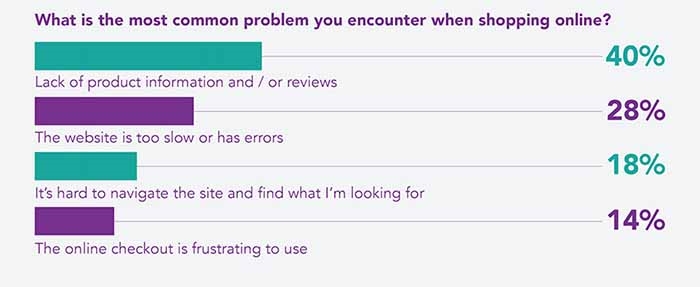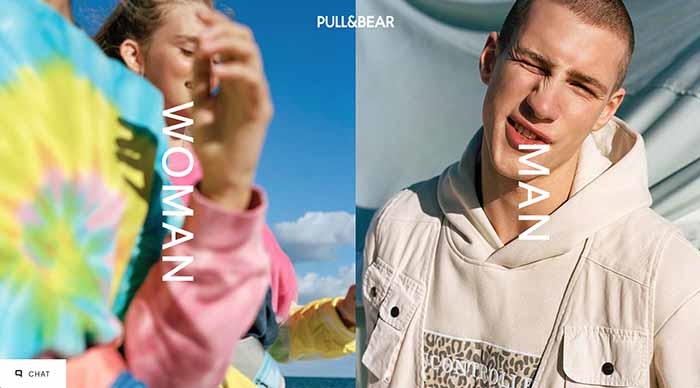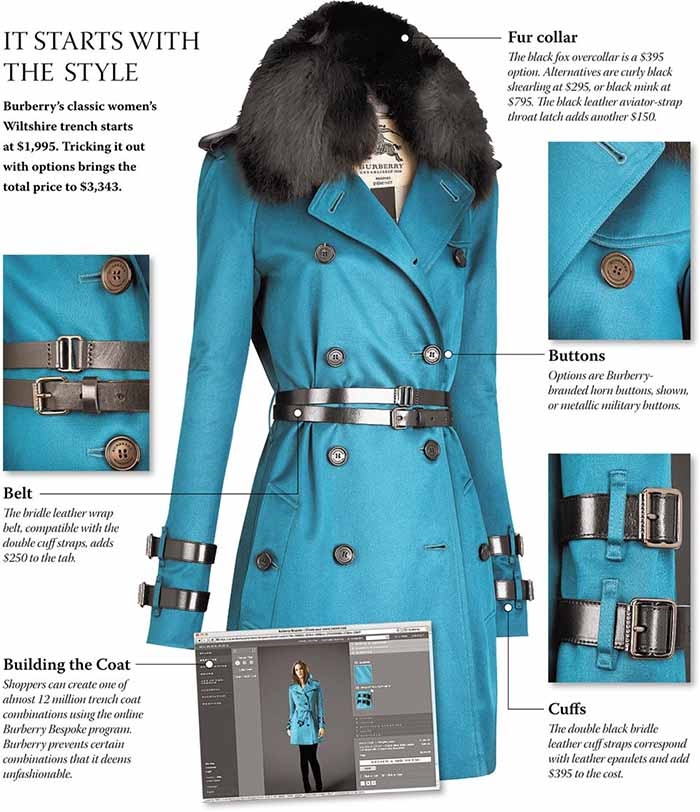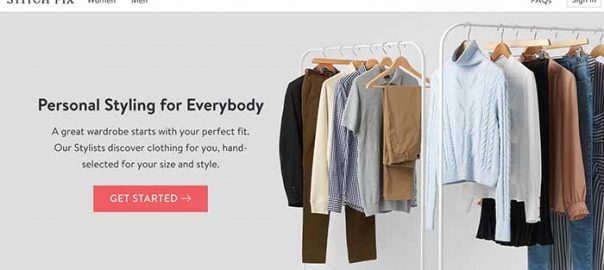A look at the technologies and eCommerce design trends that will define successful eCommerce businesses in the future.
According to a 2019 study from CouponFollow, millennials now make 60% of all purchases online, up from 47% in 2017. While baby boomers in the UK are 17 times wealthier than millennials, data from First Insight shows millennials spend more per visit – both in-store and online – in the UK and the US.
As millennials become the largest age demographic, eCommerce brands need to future-proof their online stores at a time when user demands and technologies are rapidly changing. Here are some of the biggest eCommerce trends and technologies you need to keep in mind.
Millennials are driving eCommerce design trends
Millennials are the biggest driving force behind eCommerce trends, and online retailers need to react to these demands. As eMarketer explains, “millennials have long been omnichannel shoppers, but their preference for digital channels is [still] growing”.
Mobile is obviously at the heart of millennial shopping habits, but the consumer journey takes place across a growing number of devices and platforms. While voice search adoption remains relatively low across all demographics, the CouponFollow data says 45% of millennials are using voice assistants while shopping online.
This isn’t the only technology promising to shape the future of eCommerce either.
- Voice search: This is where an increasing number of consumer journeys begin.
- VR: We’re already seeing virtual reality work its way into fashion, home furnishing, travel and a growing range of other consumer sectors.
- IoT: As smartwatches, HD TVs, cars and almost every device in our lives become connected, omnichannel marketing is only going to become more complex.
- Omnichannel content: eCommerce brands need to be able to deliver content across all of these channels, in the right format – or risk losing consumers between touchpoints.
- Hyper-personalisation: The world’s leading eCommerce brands are already using AI to deliver highly-personalised experiences to consumers on an individual basis.
- Predictive analytics: AI-powered analytics is going to allow eCommerce brands to understand what consumers will do next and deliver messages in the right place, at the right time.
- Alternative payments: Digital wallets are on the rise and online retailers need to keep a keen eye on other alternatives, such as cryptocurrency.
Tech giants like Amazon and Google are driving these innovations and eCommerce brands need to stay relevant as millennial demands change. While some of these technologies are still in the experimental stages, we’re already at a point where optimising content for voice is a priority for online retailers.
Designing experiences that convert millennials

Source: whatmillennialswant.inviqa.com
Last year, UK millennials voted poor website performance as the top cause of bad online shopping experiences. Inviqa’s What Millennials Want study asked the UK demographic about their most common gripes with online shopping and the responses are telling:
- 40%: Lack of product information and / or reviews
- 28%: The website is too slow or has errors
- 18%: It’s hard to navigate the site and find what I’m looking for
- 14%: The online checkout is frustrating to use
While millennials are often painted as a generation that’s difficult to please, their online demands are actually quite simple. This tech-savvy demographic simply wants easy access to information about products so they can make informed purchase decisions.
In terms of eCommerce design, the priorities for online retailers are delivering the right content, delivering it quickly and creating user experiences that remove barriers to completing conversions.
Turn product information into browsing experiences
Millennials are comfortable with making purchase decisions but they demand “accurate and engaging product information,” according to Inviqa’s findings. Crucially, the company’s study shows millennials aren’t always shopping with explicit intent. In other words, millennials are constantly looking for inspiration and one in 10 say a lack of inspiration often prevents them from buying on Amazon.
First Insight’s The State of Consumer Spending report finds millennials are the most impulsive online purchasers, more likely to buy unplanned items than other age demographics – and this presents a major opportunity.
eCommerce brands need to move away from the traditional Amazon-style website structure and create more engaging experiences centered around browsing and inspiration.

Lush does this really well by creating “collection” pages filled with purchase ideas, gift suggestions and themed product categories. The brand prioritises this browsing experience in the hero section of its homepage instead of pushing users to make immediate purchases. We already know that millennials spend more per session than any other generation. This browsing experience allows eCommerce brands to nurture leads towards multiple purchases and, crucially, more expensive purchases.
Speed matters to millennial shoppers
When more than a quarter of millennial shoppers complain about eCommerce websites being too slow, this is something many online retailers really need to improve. Sadly, Unbounce finds just 3% of marketers say faster loading times are their top priority for 2019.

Source: Unbounce
As baffling as that stat may be, it only increases the opportunity for eCommerce brands that do make page speed a priority.
Loading times aren’t the only factor that can slow down the consumer experience though. We already know how important page content is to millennial shoppers and delivering this quickly is crucial.
You also need to think about:
- Content design: Make your content as concise as possible and use design techniques to make the most important messages stand out on every page – font styles and sizes, contrast, whitespace, compelling images, icons etc.
- Navigation: Simple, logical navigation is crucial for making content accessible quickly and guiding users along the path to purchase.
- Reducing checkout friction: Barriers preventing users from completing purchases are still a key concern for millennial shoppers.
- Cross-device, consistent experiences: Online shoppers need to be able to find content easily as they move between devices.
Simplifying navigation is a real challenge for eCommerce brands, especially if you’ve got a large range of stock across many categories. We recently published an article looking at the best eCommerce landing pages, which included Pull&Bear’s solution to this difficult problem.

The brand has created a navigational page structure that guides users to where they want to go, instead of leaving it up to them to deal with complex nav menus. Users are segmented by gender and then they’re greeted with product categories to refine the experience even further.

This navigational structure also works perfectly for the kind of inspirational browsing experience we looked at earlier. Something else Pull&Bear does is deliver a personalised experience for every user from the moment they arrive on its site – and it’s all achieved through navigational design.
Considering that 80% of shoppers are more likely to buy from a company that offers personalised experiences, this approach to navigation ticks a lot of boxes for eCommerce brands.
Millennials want more than personalisation
It takes more than a few personalised emails to impress this bunch. Millennials identify themselves as individuals not mass consumers, and they want brands to acknowledge and respect that individualism with truly unique experiences.
Millennials want brands to treat them as individual human beings.
Research from Forrester Consulting finds that consumers who feel that human touch from brands are 1.6 times more likely to make a purchase and 1.8 times more likely to recommend that particular brand.
The leading names in eCommerce are responding with hyper-personalisation to deliver 100% unique experience for each user. By combining big data with AI algorithms, brands like Amazon are able to make accurate predictions for product recommendations and buyer behaviours.
We also have premium brands like Burberry allowing consumers to fully customise their products to represent who they are (or, more importantly, aspire to be).

Source: Wall Street Journal
StitchFix has built its entire business model around hyper-personalisation; its website acts as the interface for delivering unique customer experiences. Aside from solving some of the most common problems millennials face with buying clothes online (sizes, inaccurate images etc), StitchFix treats every customer as an individual – not only with personalised content, but with a personalised service.

Millennials are already the most valuable eCommerce audience and they’re driving the innovation we see on platforms like Amazon and Google Shopping. Online retailers need to cater for millennial demands now – such as hyper-personalisation – and make the most of new technologies to create experiences that engage this generation.
Tech giants like Amazon aren’t the only brands that can innovate to capture millennial interests, as we can see from startups like StitchFix. Smaller businesses need to make the most of their agile size to adapt to new trends and keep millennials (and Gen Z) at the centre of their online experiences.
Digital & Social Articles on Business 2 Community
(114)
Report Post




